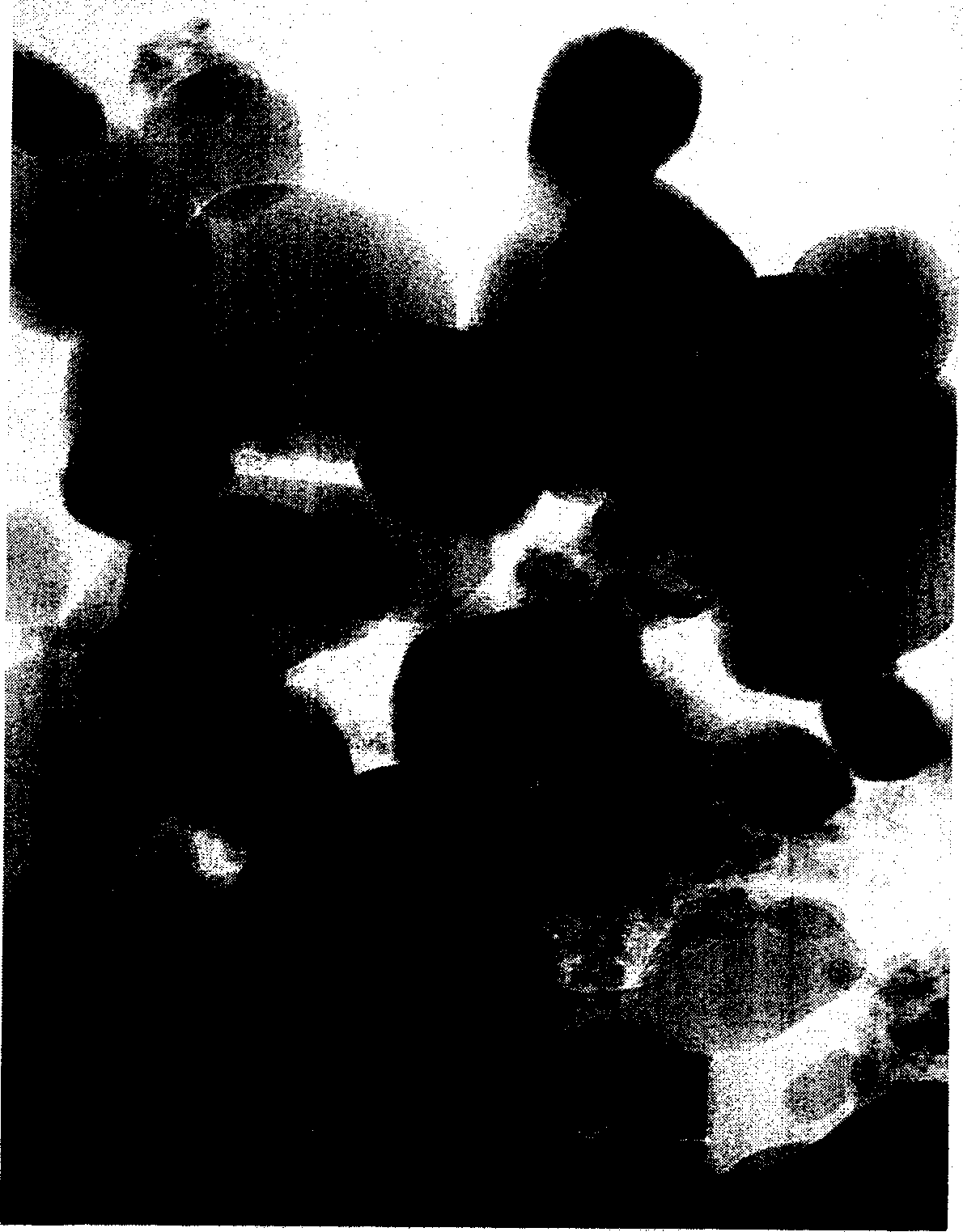Nano transitional metallic oxide preparation method
A technology of transition metal and transition metal salt is applied in the field of preparation of nano-transition metal oxide, which can solve the problems of high cost, large amount of surfactant, difficult separation and the like
- Summary
- Abstract
- Description
- Claims
- Application Information
AI Technical Summary
Problems solved by technology
Method used
Image
Examples
Embodiment 1
[0068] Mix 100g of Changsanxian dewaxed oil and 50g of SP-80, heat to dissolve at 120°C, and mix well; heat 590g of copper nitrate trihydrate to 120°C to melt, slowly add to the above mixture, and mix for 10 minutes to form a uniform supersolubilizing colloid. Add 200g of sodium hydroxide to 60g of water and heat to dissolve, add into the formed supersolubilized colloid, and mix well. Wash once with ethanol, then wash with distilled water until sodium nitrate is less than 0.5w%, and centrifuge. Dry at 110°C for 18 hours, and bake at 400°C for 5 hours, that is, the nano-copper oxide of this example, its properties are as follows: average particle size 19nm, BET specific surface 73m 2 / g, pore volume (ml / g) 0.193, average pore diameter (A) 159.
Embodiment 2
[0070] Heat 67g of four-liner oil and 10g of polyisobutenyl maleic acid glyceride at 100°C to dissolve and mix evenly; heat 800g of ferric nitrate hexahydrate to 120°C to melt, slowly add to the above mixture, and mix for 20 minutes to form a uniform supersolubilization gel body. 123g of liquid ammonia was slowly added to the above mixture, the reactor was sealed, and reacted at 110°C for 2 hours. Seal the reactor, react at 200°C for 4 hours, and age for 10 hours. Then wash with distilled water until the weight concentration of ammonium nitrate is less than 0.5wt%, and centrifuge. Dry at 100 DEG C for 10 hours, bake at 500 DEG C for 8 hours, the nano-iron oxide of the present embodiment has the following properties: average particle diameter 36nm, BET specific surface 69m2 / g, pore volume (ml / g) 0.21, average pore diameter ( A) 129.
Embodiment 3
[0072] Heat and dissolve 300g of second-line oil and 30g of polyisobutenyl triethanolamine maleate at 100°C to dissolve; mix 500g of manganese nitrate hexahydrate and 170g of urea to melt at 120°C, slowly add to the above mixture, and mix for 20 minutes to form Uniform hypersolubilized colloid. Seal the reactor, react at 200° C. for 4 hours, and age for 10 hours to obtain nano manganese hydroxide gel. Then wash with distilled water until the weight concentration of ammonium nitrate is less than 0.5wt%, and centrifuge. Dry at 100°C for 10 hours, and bake at 500°C for 8 hours, that is, the nano manganese oxide of this example, its properties are as follows: average particle size 27nm, BET specific surface 82m 2 / g, pore volume (ml / g) 0.24, average pore diameter (A) 131.
PUM
| Property | Measurement | Unit |
|---|---|---|
| melting point | aaaaa | aaaaa |
| melting point | aaaaa | aaaaa |
| particle size | aaaaa | aaaaa |
Abstract
Description
Claims
Application Information
 Login to View More
Login to View More - R&D
- Intellectual Property
- Life Sciences
- Materials
- Tech Scout
- Unparalleled Data Quality
- Higher Quality Content
- 60% Fewer Hallucinations
Browse by: Latest US Patents, China's latest patents, Technical Efficacy Thesaurus, Application Domain, Technology Topic, Popular Technical Reports.
© 2025 PatSnap. All rights reserved.Legal|Privacy policy|Modern Slavery Act Transparency Statement|Sitemap|About US| Contact US: help@patsnap.com

